
TELECOMMUNICATION SYSTEMS
Scope & Guideline
Innovating Communication: Where Theory Meets Practice
Introduction
Aims and Scopes
- Wireless Communication Technologies:
Research on various wireless communication technologies, including 5G, 6G, and IoT, emphasizing advancements in network architecture, protocols, and performance optimization. - Network Security and Privacy:
Exploration of security mechanisms and privacy-preserving techniques in communication networks, addressing vulnerabilities and proposing robust solutions. - Machine Learning and Artificial Intelligence Applications:
Integration of ML and AI techniques in telecommunications, focusing on enhancing network performance, resource optimization, and intelligent decision-making. - Energy Efficiency and Green Communications:
Studies aimed at improving energy efficiency in communication systems, including energy-aware protocols and sustainable network designs. - Signal Processing Techniques:
Development of advanced signal processing algorithms for improving the reliability and efficiency of communication systems, including MIMO and OFDM. - Cognitive Radio and Spectrum Management:
Research on cognitive radio technologies and spectrum sharing strategies to enhance the utilization of available frequency resources. - Quality of Service (QoS) and Performance Analysis:
Investigations into QoS provisioning, traffic management, and performance metrics for various network architectures, ensuring reliable service delivery.
Trending and Emerging
- 6G and Future Communication Technologies:
Increased focus on 6G technologies and their implications for future communication systems, addressing challenges and innovations in high-speed, low-latency networks. - Internet of Things (IoT) and Smart Technologies:
Growing research on IoT applications, including smart cities, health monitoring, and industrial IoT, emphasizing connectivity, scalability, and security. - Artificial Intelligence in Telecommunications:
A significant rise in the application of AI and machine learning for optimizing network management, predictive maintenance, and enhancing user experience. - Edge Computing and Federated Learning:
Emerging interest in edge computing paradigms and federated learning approaches, focusing on data processing closer to the source to reduce latency and enhance efficiency. - Security in Emerging Networks:
Increased publication of studies addressing security challenges in next-gen networks, including post-quantum cryptography and secure communication protocols. - Sustainability and Green Networking:
Research into sustainable practices and energy-efficient designs in telecommunications, aligning with global efforts towards reducing carbon footprints. - Advanced MIMO and Beamforming Techniques:
A notable increase in research on advanced MIMO configurations and beamforming strategies to enhance capacity and coverage in wireless networks.
Declining or Waning
- Traditional Telecommunication Protocols:
Research on conventional telecommunication protocols is decreasing, likely due to the rapid evolution of new standards and technologies that require innovative approaches. - Legacy Network Technologies:
As the industry transitions to next-generation networks, studies focusing on legacy technologies such as 2G and 3G are becoming less relevant and less frequently published. - Static Network Architectures:
There is a noticeable decline in research concerning static network architectures, as the focus shifts towards dynamic, software-defined, and virtualized networking solutions. - Basic Signal Processing Techniques:
Research on rudimentary signal processing methods is waning, with more emphasis now placed on advanced and adaptive techniques relevant to modern communication challenges. - General Surveys without Novel Contributions:
Surveys that do not provide novel insights or advancements in the field are becoming less common, as the journal seeks to prioritize original research and innovative findings.
Similar Journals

WIRELESS PERSONAL COMMUNICATIONS
Empowering the Future of Wireless Communication SystemsWIRELESS PERSONAL COMMUNICATIONS, established in 1994 and published by Springer, is a vital resource for researchers and professionals in the fields of Computer Science Applications and Electrical and Electronic Engineering. With an impressive impact factor, this journal has achieved a Q2 ranking in both relevant categories as of 2023, demonstrating its significance in advancing knowledge and fostering innovation in wireless communication technologies. The journal encompasses a comprehensive scope, covering topics such as mobile networking, signal processing, and communication protocols, making it essential reading for academic and industry stakeholders. Although primarily subscription-based, it remains committed to disseminating high-quality research that shapes the future of wireless technologies. Housed in the Netherlands, WIRELESS PERSONAL COMMUNICATIONS continues to foster a global dialogue among scholars and practitioners, contributing to the burgeoning field of personal and mobile communication systems.

Telecom
Exploring Innovations in Communication TechnologiesTelecom is an esteemed peer-reviewed journal published by MDPI, specializing in the fields of computer networks and communications as well as electrical and electronic engineering. Since its inception in 2020, this Open Access journal has provided a platform for innovative research and advancements in telecommunication technologies, making significant contributions to both academia and industry. With an impressive impact factor and a category rank of Q2 in the 2023 Scopus rankings, Telecom continues to be a valuable resource for researchers, professionals, and students seeking to engage with cutting-edge developments in telecommunication. The journal invites high-quality manuscripts that explore emerging trends, challenges, and solutions in the ever-evolving telecom landscape. Situated in Basel, Switzerland, Telecom is committed to fostering a global exchange of knowledge and serves as an essential conduit for advancing the discourse in telecommunications.
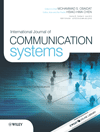
INTERNATIONAL JOURNAL OF COMMUNICATION SYSTEMS
Innovating Connections in Network EngineeringInternational Journal of Communication Systems, published by Wiley, is a premier scholarly publication dedicated to advancing the field of communication systems and network engineering. With an ISSN of 1074-5351 and E-ISSN 1099-1131, this journal has emerged as a critical resource for researchers and professionals alike, showcasing innovative research from 1994 to 2024. Holding a distinguished Q2 quartile ranking in both Computer Networks and Communications and Electrical and Electronic Engineering, it ranks within the top tiers of its field, reflecting its high impact and relevance. The journal's focus spans a wide range of topics within these disciplines, including but not limited to, advanced communication protocols, network design, signal processing, and emerging technologies. Although it does not currently offer open access options, the journal remains committed to disseminating high-quality research to contribute meaningfully to the scientific community. Researchers, professionals, and students will find invaluable insights and ideas to further their work and understanding in this dynamic field.
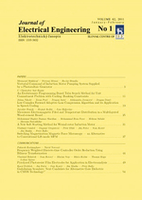
Journal of Electrical Engineering-Elektrotechnicky Casopis
Connecting Researchers to the Future of Electrical Engineering.Journal of Electrical Engineering - Elektrotechnicky Casopis is a distinguished peer-reviewed journal published by Slovak University of Technology, dedicated to advancing the field of Electrical and Electronic Engineering. With an ISSN of 1335-3632, this journal aims to disseminate high-quality research findings, innovative methodologies, and significant technological advancements that contribute to the development of electrical engineering practices. Operating since 2004, it embraces an open-access model to enhance the visibility and accessibility of scholarly articles, thereby fostering knowledge exchange within the global research community. The journal holds a respectable Q3 categorization in the field, ranked 544 out of 797 in Scopus, indicating its growing influence within the discipline. Through rigorous peer-review processes, it provides a platform for researchers, professionals, and students alike to publish their work and stay informed on cutting-edge developments. Located in Bratislava, Slovakia, the journal is an essential resource for anyone involved in the rapidly evolving world of electrical engineering.
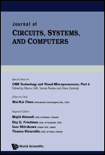
JOURNAL OF CIRCUITS SYSTEMS AND COMPUTERS
Advancing the Frontiers of Circuits and ComputingJOURNAL OF CIRCUITS SYSTEMS AND COMPUTERS is a pivotal publication in the fields of Electrical and Electronic Engineering as well as Hardware and Architecture, published by World Scientific Publishing Co. Pte Ltd in Singapore. With an ISSN of 0218-1266 and an E-ISSN of 1793-6454, this journal has contributed significantly to the discourse surrounding innovative research and technological advancements since its inception in the late 1990s. It currently holds a Q3 ranking in both relevant categories, reflecting its competitive stature and providing researchers, professionals, and students a substantial platform for disseminating findings. The journal covers a diverse range of topics, focusing on the design, analysis, and application of circuits, systems, and advanced computing technologies. Authors benefit from a rigorous peer-review process, ensuring high-quality publications that drive the field forward. The journal's commitment to excellence underscores its importance in fostering academic collaboration and knowledge exchange, making it a vital resource for anyone dedicated to advancing the domains of electrical engineering and computer science.

International Journal of Electronics and Telecommunications
Connecting Ideas, Inspiring ResearchWelcome to the International Journal of Electronics and Telecommunications, a prominent publication dedicated to the evolving fields of electronics, telecommunications, and computer networks. Established by the Polska Akademia Nauk (Polish Academy of Sciences), this journal is committed to fostering academic research and technological advancements within these crucial domains. As of 2023, it holds a Q4 ranking in both Computer Networks and Communications and Electrical and Electronic Engineering, showcasing its role as a platform for emerging ideas and groundbreaking studies. With an Open Access model implemented since 2013, it enhances the visibility and accessibility of its articles, encouraging a broader impact and collaboration among researchers, professionals, and students alike. The journal serves as an important resource for those interested in the intersection of technology and communications, and it continues to contribute to the academic dialogue surrounding these vital sectors.
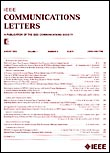
IEEE COMMUNICATIONS LETTERS
Shaping Tomorrow’s Technologies Through Rigorous ResearchIEEE Communications Letters, published by the esteemed IEEE - Institute of Electrical and Electronics Engineers, is a leading journal in the fields of Computer Science Applications, Electrical and Electronic Engineering, and Modeling and Simulation. Since its inception in 1997 and continuing through to 2024, this journal has consistently ranked in the prestigious Q1 quartile across its categories, reflecting its high quality and substantial impact in the academic community. With an impressive Scopus rank, particularly standing at #24 in Mathematics - Modeling and Simulation, the journal serves as an essential resource for researchers, professionals, and students eager to stay at the forefront of innovative communications technologies. Although it does not offer open access, the journal ensures rigorous peer review and publication of concise, impactful articles that push the boundaries of research and application. Whether you’re involved in theoretical developments or practical implementations, IEEE Communications Letters provides critical insights that shape the future of engineering and technology.

International Journal of Wireless Information Networks
Advancing Knowledge in Wireless Networks and TechnologiesInternational Journal of Wireless Information Networks, published by Springer, is a premier outlet for scholarly research in the fields of wireless information and communication technologies. With an ISSN of 1068-9605 and an E-ISSN of 1572-8129, this journal has established itself as a significant contributor to the literature since its inception in 1994. As evaluated in 2023, it holds a commendable Q2 ranking in several categories, including Computer Networks and Communications, Electrical and Electronic Engineering, and Hardware and Architecture, reflecting its robust impact and relevance within the academic community. Furthermore, it is ranked within the top quartiles in Scopus, placing it in the 76th, 74th, and 73rd percentiles in relevant fields. While the journal does not currently offer open access options, it remains an essential resource for researchers, professionals, and students dedicated to advancing knowledge and innovation within wireless information networks. The authoritative content published within these pages positions the journal at the forefront of ongoing technological developments, making significant contributions to the field until at least 2024.
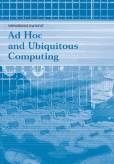
International Journal of Ad Hoc and Ubiquitous Computing
Empowering Knowledge in Computer CommunicationsThe International Journal of Ad Hoc and Ubiquitous Computing, published by InderScience Enterprises Ltd, is a premier platform dedicated to advancing the fields of computer networks, communication systems, hardware, and software architecture. Since its inception in 2005, this journal has served as a critical resource for researchers, professionals, and students aiming to explore the intricate dynamics of ubiquitous computing and ad hoc networks. Though currently not an open-access journal, its scholarly contributions are well-recognized, as evidenced by its rank in the Scopus database, which places it within the lower quartiles of its respective categories. With an increasing focus on innovative solutions in computer science, the journal aims to facilitate knowledge dissemination and encourage interdisciplinary collaborations. Researchers are particularly drawn to the journal for its comprehensive coverage of emerging technologies, making it an invaluable asset in a world increasingly reliant on sophisticated communication infrastructures. As it continues to thrive towards 2024, the journal remains committed to fostering a vibrant academic community.

Electronics
Exploring the Future of Electronics ResearchElectronics, published by MDPI since 2012, stands as a pivotal open-access journal that caters to a wide spectrum of disciplines within the electrical and electronic engineering domain. With a strong commitment to disseminating innovative research, this journal has garnered notable recognition, achieving a Q2 ranking in multiple pertinent categories, including Computer Networks and Communications, Control and Systems Engineering, and Signal Processing. Its editorial standards and open-access format enhance the visibility and accessibility of high-quality research, making critical advancements in technology available to a global audience. Located in Switzerland, the journal is positioned to foster international collaboration and dialogue among researchers, professionals, and students dedicated to exploring the evolving landscape of electronics and its applications. With an E-ISSN of 2079-9292, the journal is meticulously indexed in reputable databases like Scopus, further solidifying its relevance and influence in the engineering community.